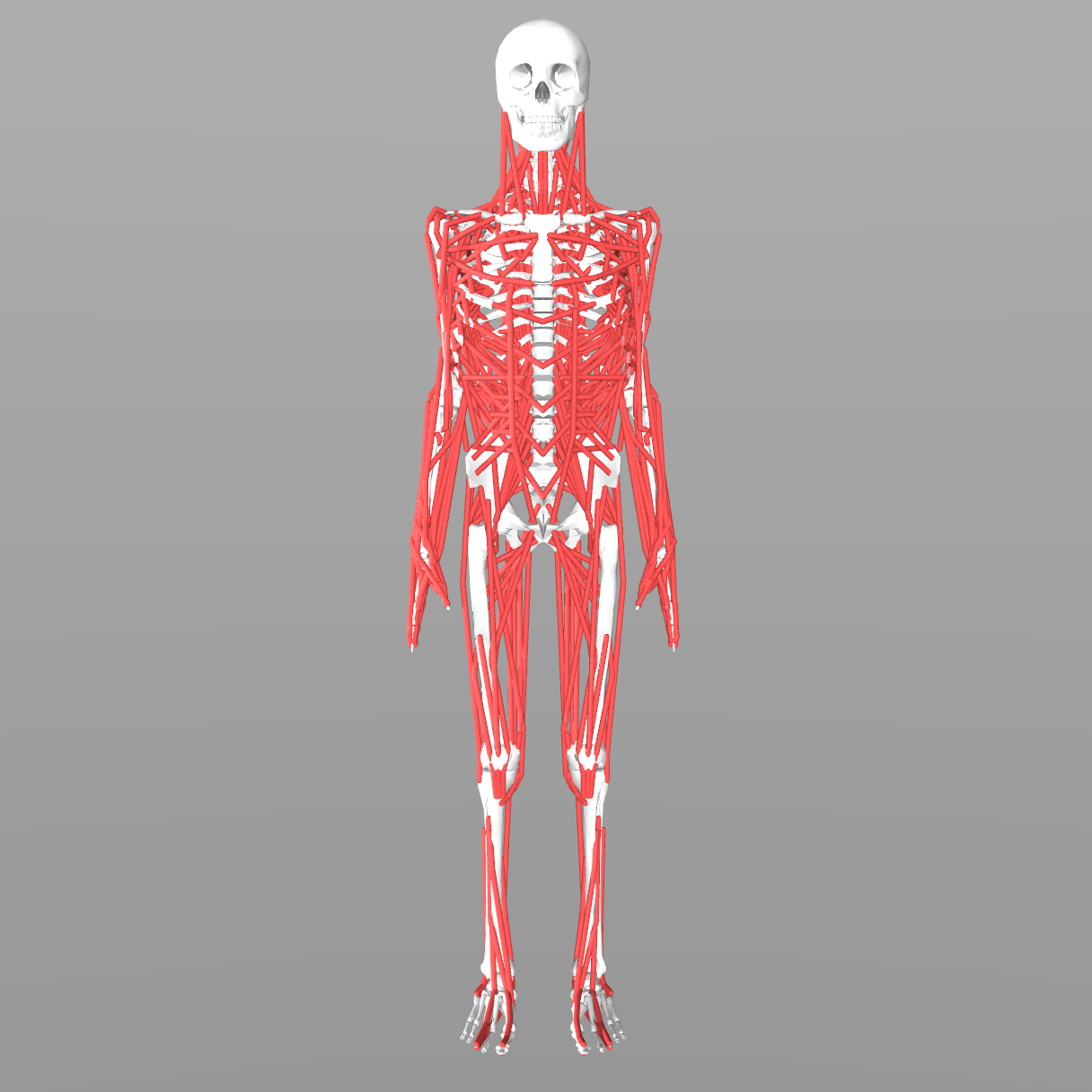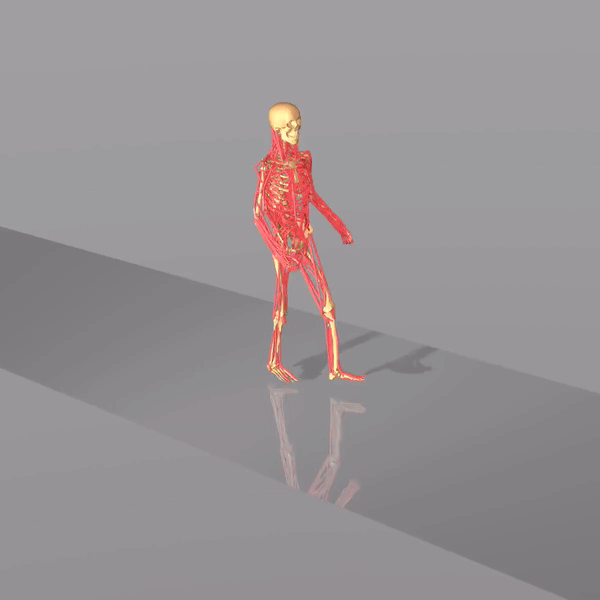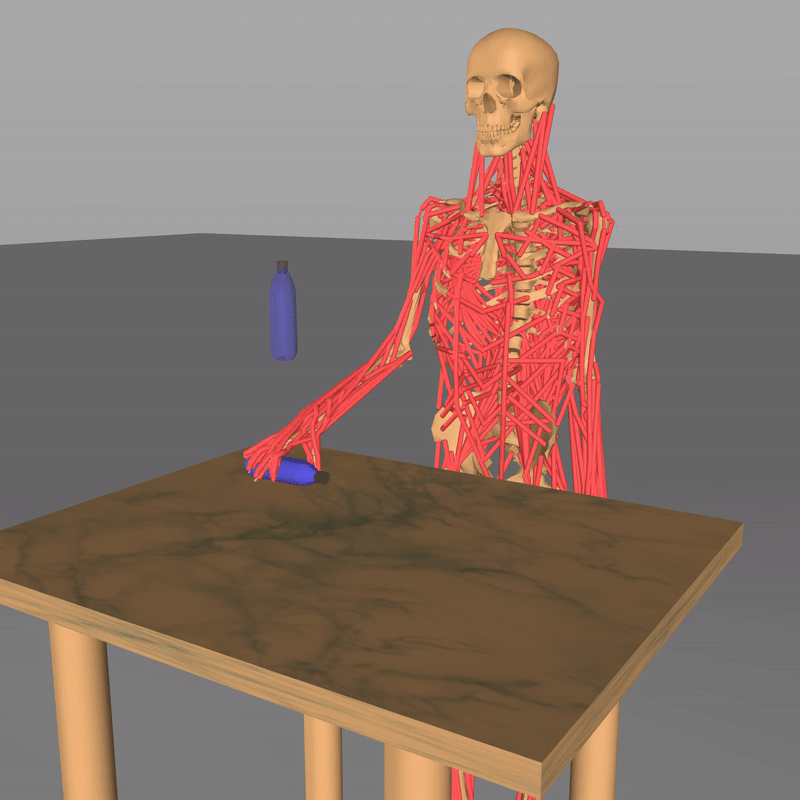DynSyn Control Results
The MS-Human-700 model controlled by DynSyn algorithm demonstrates remarkable capabilities in both locomotion and manipulation tasks.
The MS-Human-700 project encompasses a series of research works focused on developing comprehensive human musculoskeletal models and advanced control algorithms. This project addresses fundamental challenges in understanding human motor functions, developing embodied intelligence, and optimizing human-robot interaction systems.
Our research spans three key areas: musculoskeletal modeling (MS-Human-700), efficient deep reinforcement learning through dynamical synergies (DynSyn), and hierarchical model predictive control (MPC2). Together, these works provide a complete framework for simulating and controlling high-dimensional human movement.
The MS-Human-700 model represents a whole-body human musculoskeletal system, featuring:
The model enables simulation of full-body dynamics and interaction with various devices, making it suitable for research in embodied intelligence, robotics, and biomechanics.

The MS-Human-700 model controlled by DynSyn algorithm demonstrates remarkable capabilities in both locomotion and manipulation tasks.


The MS-Human-700 model controlled by MPC2 algorithm demonstrates remarkable capabilities in generalizability to model changes and perturbation.
IEEE International Conference on Robotics and Automation (ICRA) 2024
This work introduces the MS-Human-700 model, a comprehensive musculoskeletal system with 90 body segments, 206 joints, and 700 muscle-tendon units. The paper presents a novel hierarchical deep reinforcement learning algorithm using low-dimensional representation to achieve full-body control.
International Conference on Machine Learning (ICML) 2024
DynSyn addresses the challenge of learning effective policies for high-dimensional, overactuated systems by introducing dynamical synergistic representations. Inspired by muscle synergies in neuromechanics, this work demonstrates how to derive synergistic representations from dynamical structures and perform task-specific adaptations.
International Conference on Learning Representations (ICLR) 2025
MPC2 (Model Predictive Control with Morphology-aware Proportional Control) introduces a hierarchical model-based learning algorithm for zero-shot and near-real-time control of high-dimensional complex dynamical systems. The approach combines sampling-based model predictive control with morphology-aware proportional control for robust actuator coordination.